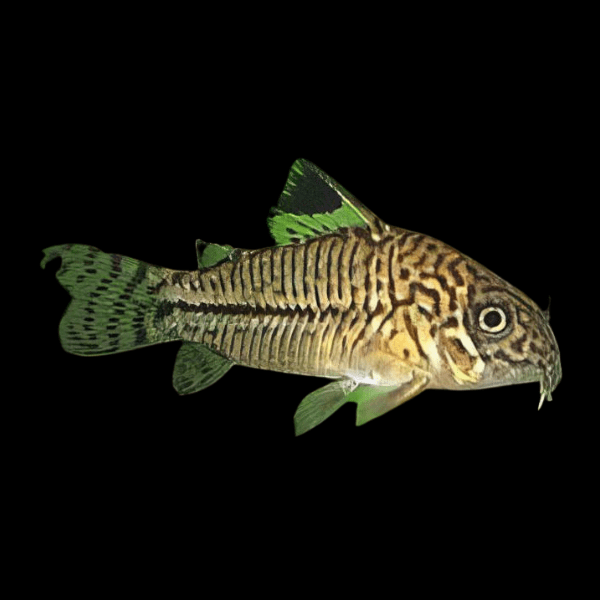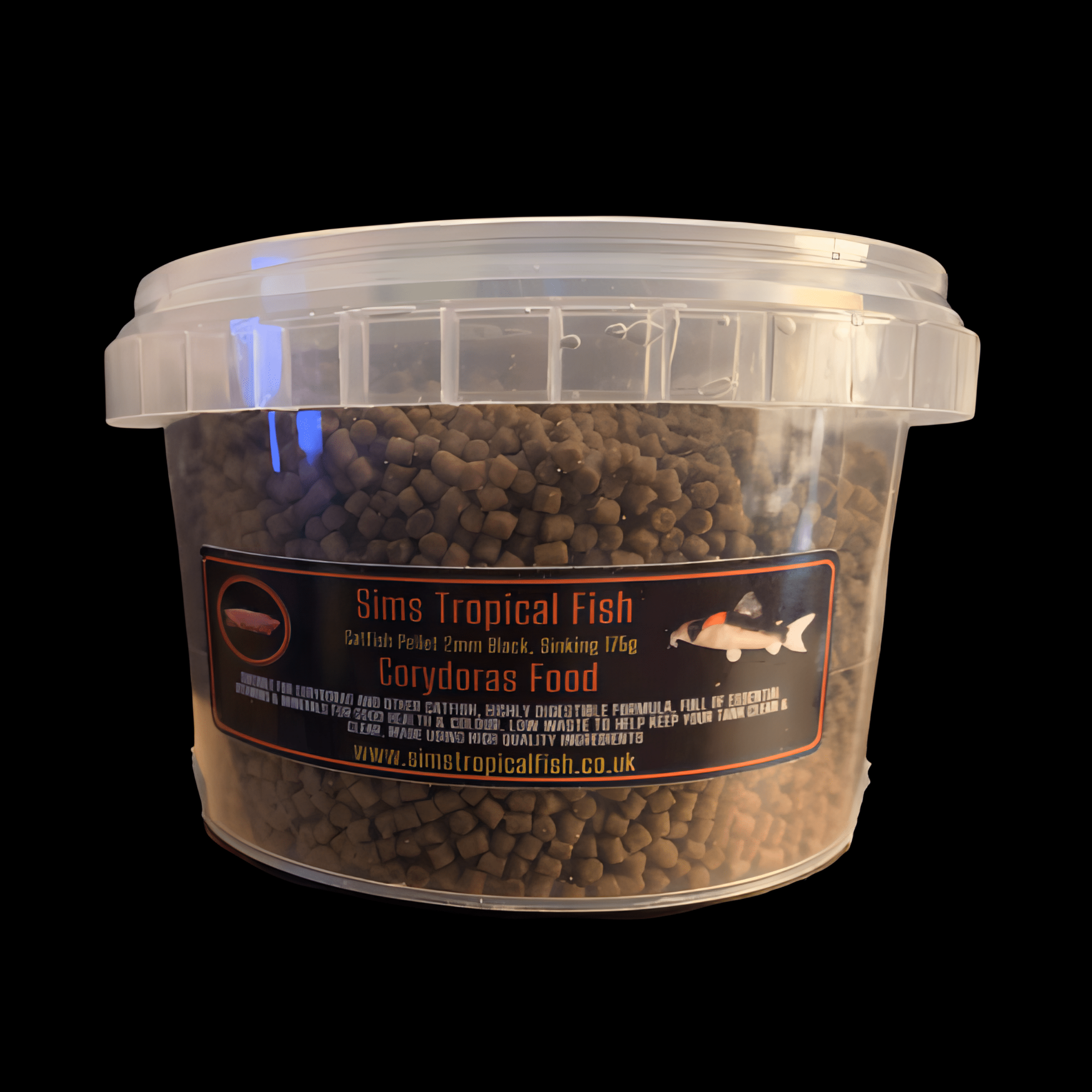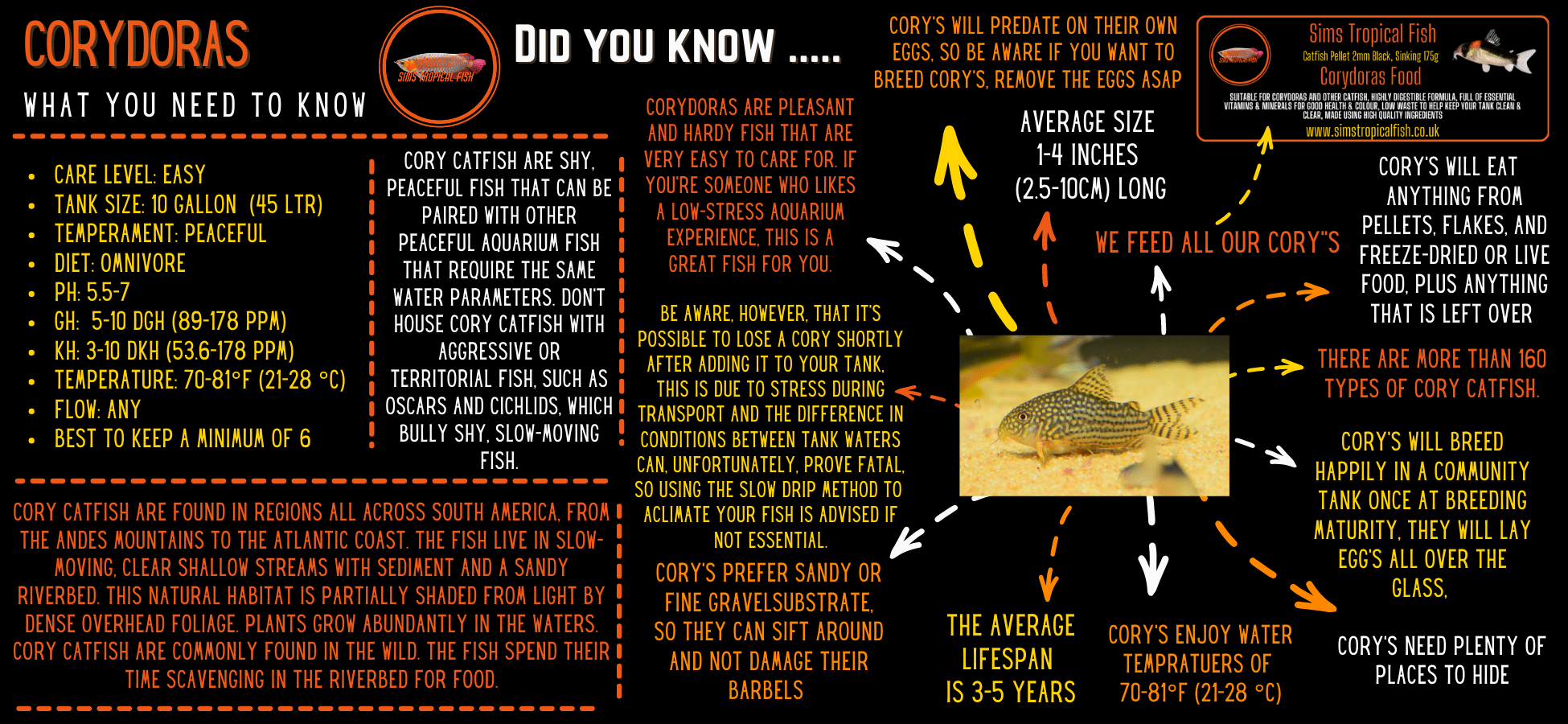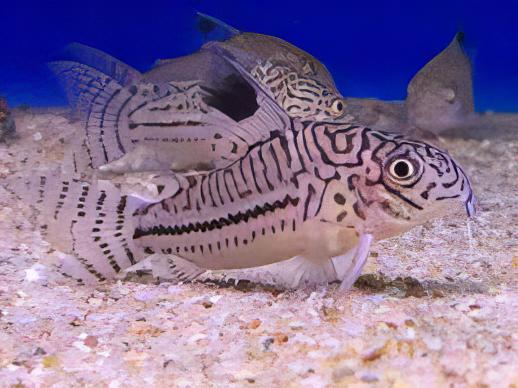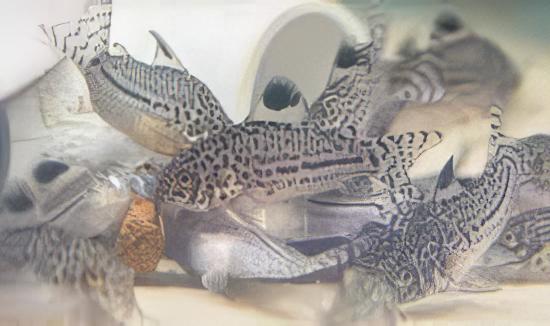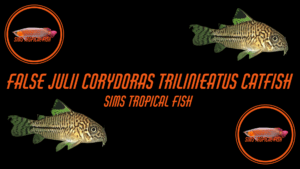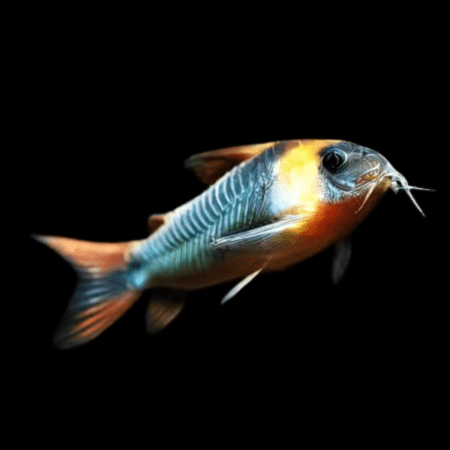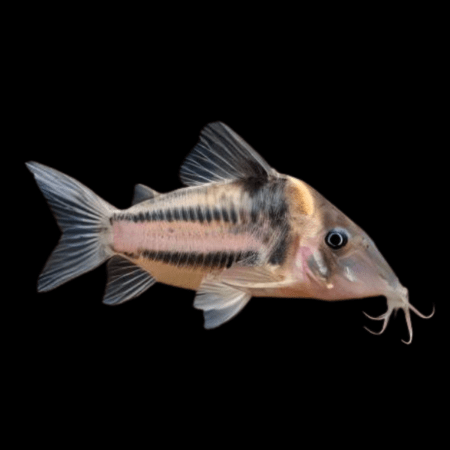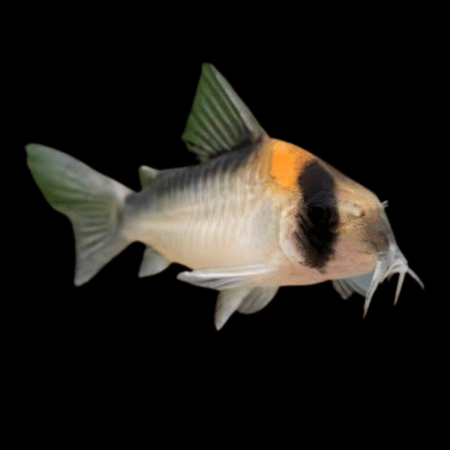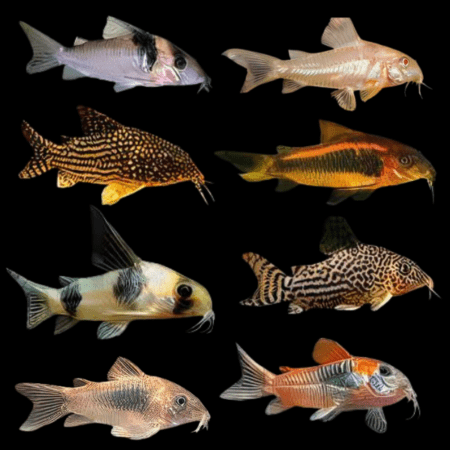Description
False Julii Corydoras Trilinieatus Catfish
Synonyms: Corydoras dubius, Corydoras episcopi
Distribution: Brazil, Colombia, Peru & Suriname.
Maximum Size: 6cm (2.36″)
Temperature: 16-26°C
Water Parameters: Will acclimatise to a wide range of conditions. pH: 6.0-8.0, dH: up to 20 degrees.
Compatibility: Community
Lighting: No special requirements
Sexual Dimorphism: Mature females are larger and appear fuller when viewed from above.
Feeding: Catfish pellets, granules, flake and frozen foods
Description
Care
This beautiful and widely-kept catfish has been misidentified for decades.
Like all of its kin, this fish is best kept on a soft sand substrate where it can root around and forage without risk to its barbels which can be damaged by abrasion and bacterial infections from the accumulated waste that often builds up in coarse gravel. Filtration should be efficient with areas of moderate water movement and a decent level of oxygenation. Regular maintenance, including frequent partial water changes, should be carried out in order to keep these fish in good condition. Provide plenty of shady areas amongst driftwood, rocks, and areas of dense planting. As a social species, they should be kept in groups of 5 or more. Other peaceful species such as some of the smaller pencilfish, tetra, and rasboras make ideal tankmates, and their presence as “˜dither fish”™ in midwater will encourage the Corydoras out into view more often. These fish have the ability to breathe air intestinally, so a small gap should be left between the surface of the water and the cover slides in order for the fish to come up to the surface and take air in. They may do this numerous times per day, depending on temperature and oxygen levels.
More often than not, you will see this species incorrectly labelled in dealers tanks as Corydoras julii (or even Corydoras leopardus). Corydoras julii have small spotted type markings on the head area, whereas C. trilineatus have a more reticulated pattern and a more pronounced pattern of lines that give this fish its name. The true C. julii is only very rarely imported and it’s a fairly safe bet that any fish labelled as julii is trilineatus – a situation perpetuated by years of misidentification in books and online resources. As many stores pass on the names used by suppliers, this misidentification gets perpetuated.
Feeding
Sinking catfish pellets, frozen foods such as mosquito larvae and brineshrimp. Will also relish live foods.
Breeding
Mature fish (2 males:1 female) can be triggered into spawning by performing a large, slightly cooler water change. A pair will adopt the classic Corydoras “˜T position” where the male fertilises the eggs that are held between the females”™ pelvic fins. The semi-adhesive eggs will then be deposited onto plants, décor, or the sides of the aquarium etc and the process repeated. The eggs generally take 4-5 days to hatch, and after a further 48 hours they will become free-swimming and are able to take finely-powdered first foods and newly hatched brineshrimp. To avoid predation and ensure a higher success rate, many fishkeepers move the parents to another aquarium after the eggs have all been deposited.
